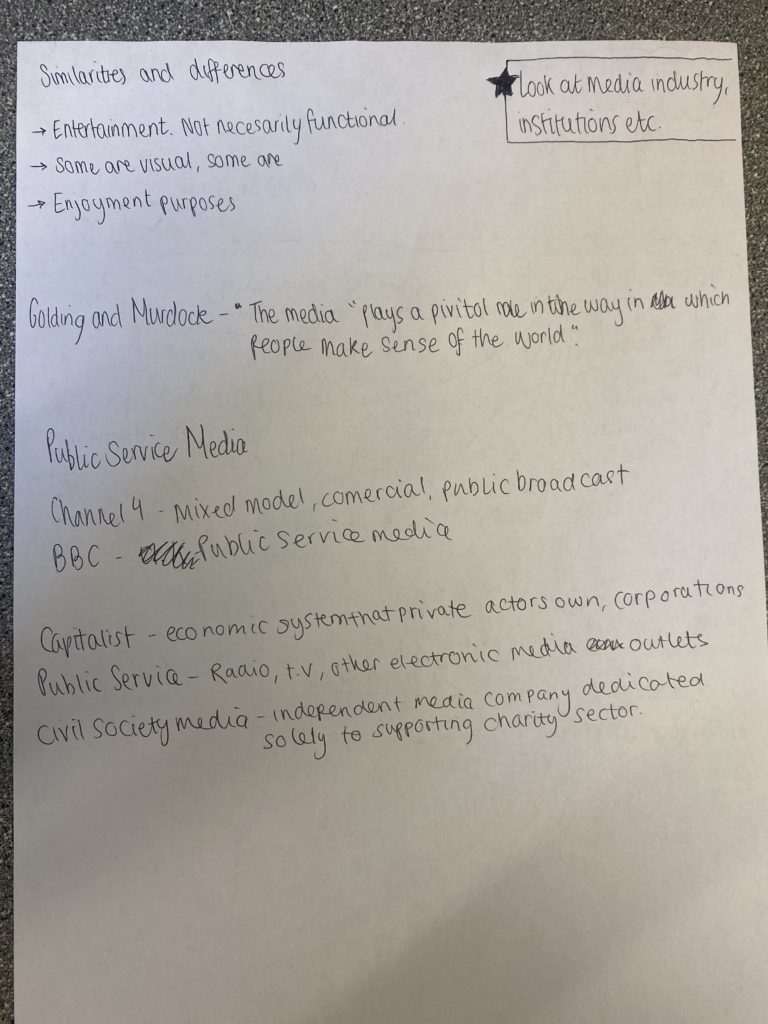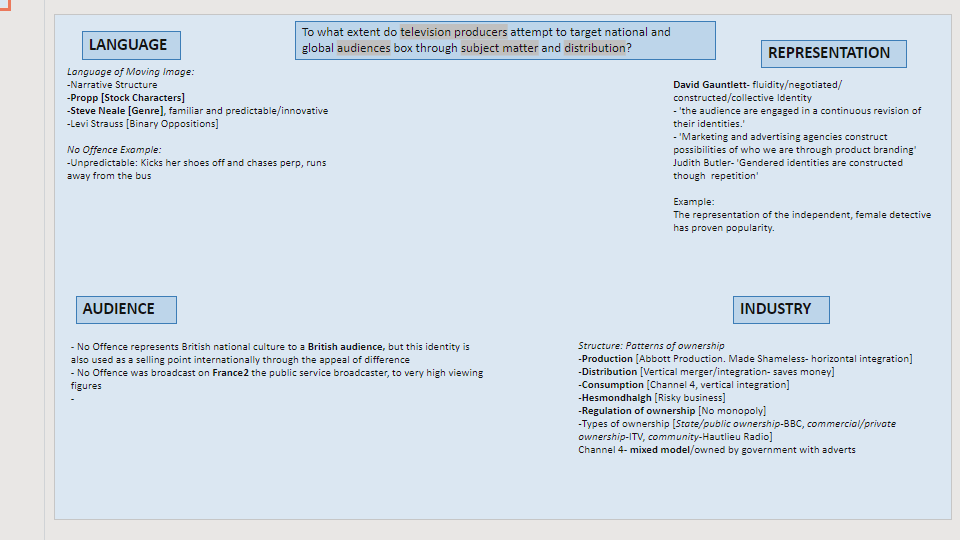


Haesmondhalgh said that the media business is a precarious business.
Public Service Broadcasting
what is it?
It involves radio, television and other forms of media who aim to serve the public. Most of the time, their funding comes from the government. Public Service Broadcasting channels include Channel 3 services, Channel 4, Channel 5 and the BBC. It is important as it is a program that reflects the wider society, ensuring diversity and inclusivity. The BBC’s ethos is to inform, educate and entertain. (capital and deuchland 83).
Capital is made by the BBC however, each episode has to be bought from amazon prime and is not available on BBC iPlayer due to the fact that they are working with other companies in the production of Capital.
Another problem with the BBC is the accessibility of it, elderly, young, poor people may struggle with it.
Are the BBC and C4 unique examples of PSB?
While all BBC public service television channels are PSB channels, only the main channels of each of the other public service broadcasters have this status.
What’s good about it?
Broadcasting is a very powerful medium which can change public opinion on a whole range of issues. It can motivate us to take action to improve our lives and the world around us – from issues such as climate change and plastic pollution to health and social issues such as mental health and homelessness
What is the criticism of it?
Capital is made by the BBC however, each episode has to be bought from amazon prime and is not available on BBC iPlayer due to the fact that they are working with other companies in the production of Capital. Another problem with the BBC is the accessibility of it, elderly, young, poor people may struggle with it. How is it organised – ie control and regulation?


